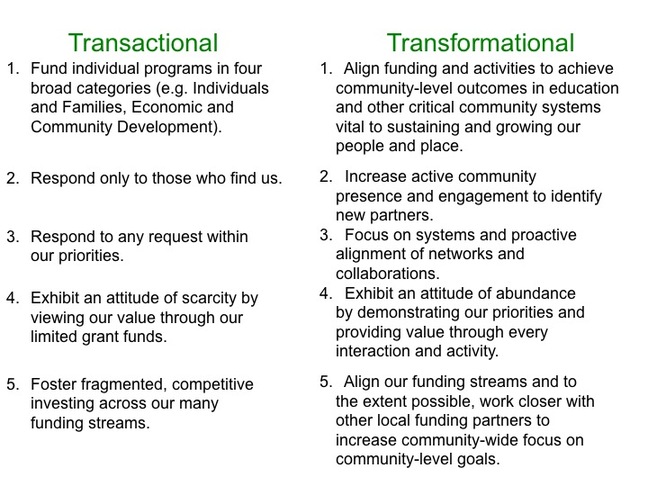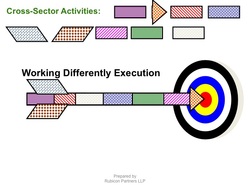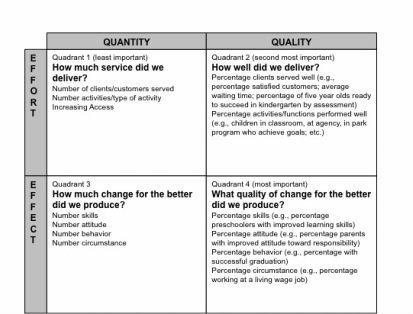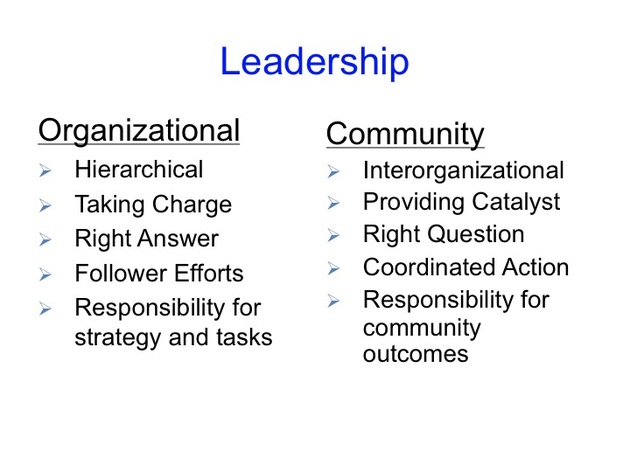At the core of my work, over the past 15-plus years, has been the achievement of broad-based community OUTCOMES. I’ve applied this to subjects as varied (yet interconnected) as health care, poverty reduction, education and economic development. Postings on my blog – www.workingdifferently.org -- and the Vibrant Communities website have relayed stories and best practices from these efforts. In the time before “collective impact,” I spent much of my time researching and disseminating information on how this can be accomplished (see my 2003 book: Community Visions, Community Solutions.) With the boost of the galvanizing frame from the Collective Impact article published in 2008 in SSIR, I have be freed up to move to concentrate on implementation and the design of sustaining tools.
At the core of implementation for me is broad COMMUNITY ENGAGEMENT. This is the area that most distinguishes my work from that of FSG and their approach to community impact. I have not seen an example of sustainable community change that did not require changed behaviors on the part of broader community members and not just a re-stacking of activities done by service providers. In order to accomplish this, the ownership for the outcome has to be invested in the community and not in a set of collaborative programs and agencies. I look forward to exploring, with you, the implications of this throughout the coming year.
My third area of value-add – and perhaps the area that promises to have the most lasting impact – is my growing focus on EDUCATION and the design and development of tools to sustain this work cross-sector, cross-community. I have written quite extensively at www.learningovations.com and at http://www.workingdifferently.org/learning-ovations.html. We will be featuring many of these tools in upcoming blogs under the “Learning Ovations” tag.
I am committed to making myself open to all members of the various working differently communities so please stay in touch: [email protected]; on twitter at https://twitter.com/jcrubicon; and on LinkedIn at www.linkedin.com/in/jcrubicon/






 RSS Feed
RSS Feed
